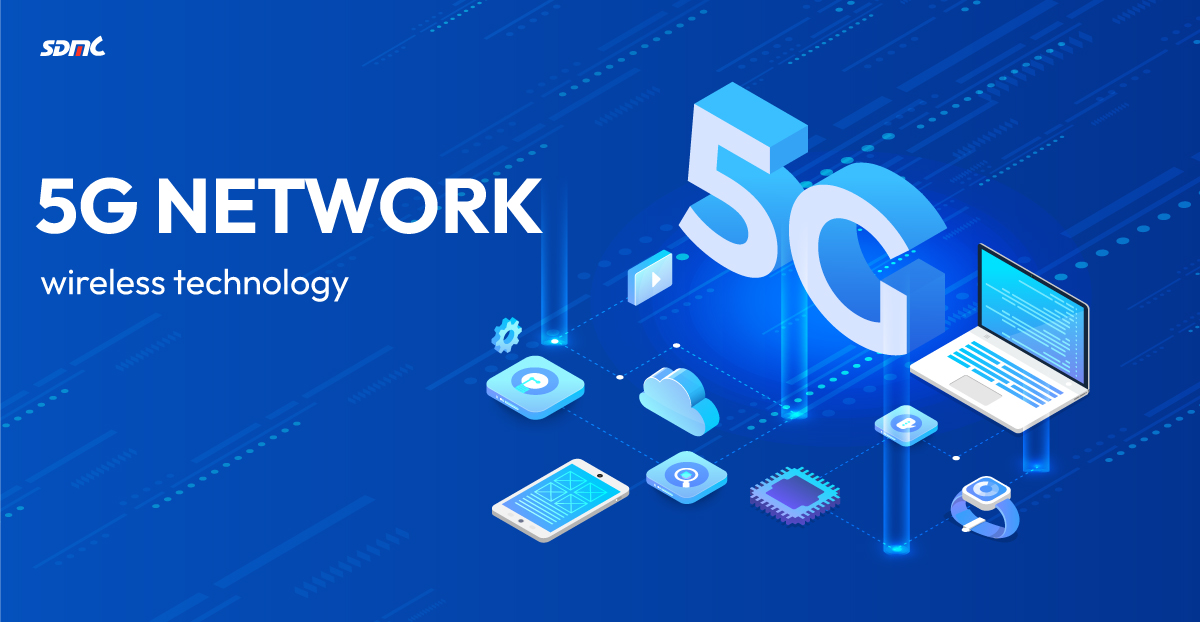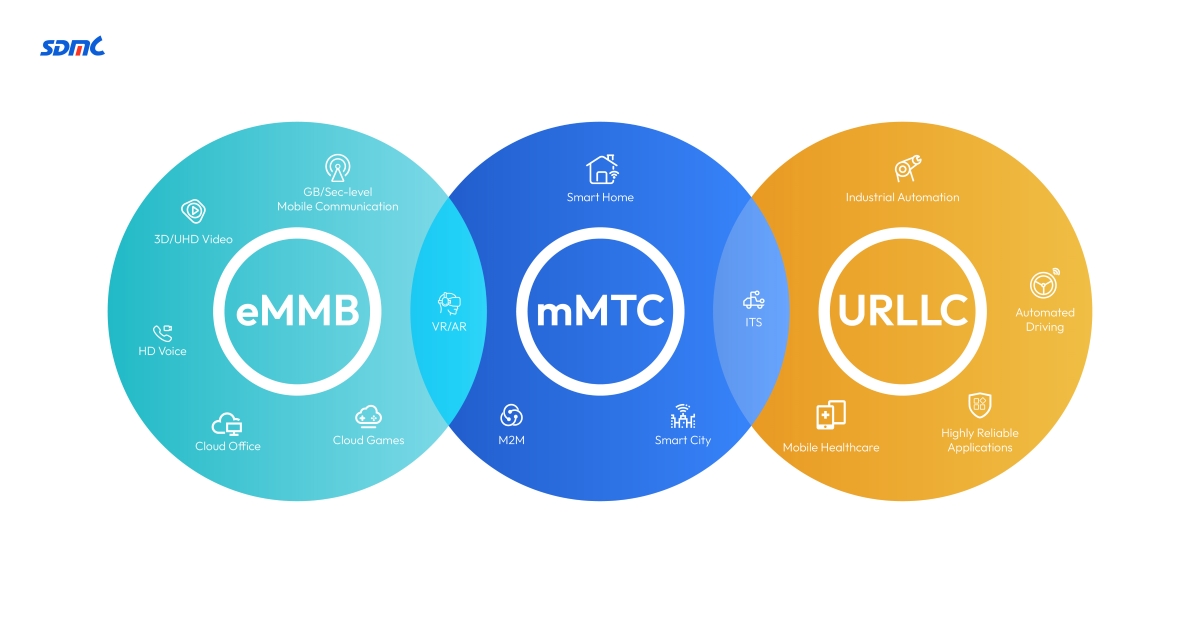From the early days of 1G to the imminent arrival of 5G, cellular technology has constantly evolved, revolutionizing communication and driving digital progress. With 5G, the fifth-generation technology standard for cellular networks, we're not merely making a stride forward - we're taking a giant leap into an era of unprecedented possibilities.
This blog post will give you a simple, clear look at what makes 5G different, the underlying technologies powering it, its real-world applications, the challenges in rolling it out, and how telecom operators can prepare for its adoption.
The Evolution of Cellular Networks
To fully understand 5G, we must briefly recap the progression of mobile network standards.
-
1. 1G, introduced in the 1980s, was the analog cellular system that enabled the first mobile voice calls with speeds up to 2.4kbps.
-
2. 2G launched in the 1990s, introducing digital mobile communication technology. Top speeds reached up to 64kbps. This generation enabled SMS text messaging and basic data services.
-
3. 3G arrived in the 2000s with peak speeds up to 2Mbps. This allowed mobile internet access, video calling, and multimedia services.
-
4. 4G LTE, first deployed in 2010, increased peak speeds to 1 Gbps. Combined with smartphones and apps, 4G enabled the mobile broadband world we live in today.
Below is a brief comparison of peak and average download speeds for mobile internet with 2G, 3G, 4G and 5G networks:
|
Network technology
|
Peak download speed
|
Average download speed
|
|
2G - HSCSD
|
64Kb/s
|
15-20 Kb/s
|
|
2G - GPRS
|
171.2 Kb/s
|
30-50 Kb/s
|
|
2G - EDGE
|
384 Kb/s
|
130-200 Kb/s
|
|
3G -UMTS
|
2 Mb/s
|
384 Kb/s
|
|
3G - HSPA
|
14.4 Mb/s
|
5 Mb/s
|
|
3G - HSPA+
|
42 Mb/s
|
5-8 Mb/s
|
|
4G - LTE
|
300 Mb/s
|
15-20 Mb/s
|
|
4G - LTE+
|
1-3 Gb/s
|
50-80 Mb/s
|
|
5G - NR
|
10 Gb/s
|
150-200 Mb/s
|
Source: https://commsbrief.com/mobile-data-speed-with-2g-3g-4g-and-5g-cellular-networks/
Each new generation represents an exponential leap in speed, connectivity, and capabilities. Now, 5G is the next major evolution in mobile technology, engineered to connect billions of devices at multi-Gbps speeds with ultra low latency.
For telecom operators to stay competitive and meet surging data demands, adopting 5G is critical, as 5G promises much faster speeds, ultra low latency, better reliability, larger network capacity, and a uniform user experience.
Defining 5G - Going Beyond Just Speed
Many equate 5G only with faster speeds. But it is far more than that. 5G operates on new radio frequency bands that facilitate extremely high-capacity networks. The International Telecommunication union (ITU) has defined three key aspects that make 5G unique:
-
1. Enhanced Mobile Broadband (eMBB): Offers multi-Gbps peak data speeds and higher capacity, enabling immersive user experiences.
-
2. Massive Machine-Type Communications (mMTC): Allows a very high density of connected devices. Vital for the Internet of Things (IoT).
-
3. Ultra-Reliable Low-Latency Communication (URLLC): Provides highly reliable and low latency connections of under 1ms. Critical for time-sensitive applications.
In addition, 5G operates on both lower frequency bands below 6 GHz and higher frequency millimeter Wave (mmWave) bands: mmWave enables faster speeds over short distances, while sub-6 GHz offers wider-area coverage.
New Radio and Other Critical 5G Technologies
To deliver on its promised capabilities, 5G relies on New Radio (NR) technology. NR is the global standard that defines the core technology components and infrastructure for true 5G networks. Some key enablers include:
-
1. Massive MIMO: Uses a large array of antennas for increased capacity and performance.
-
2. Beamforming: Focuses signals in specific directions for stronger connections.
-
3. Small Cells: Low-powered base stations that allow dense networks.
-
4. Network Slicing: Logically isolates virtual end-to-end networks on shared infrastructure.
These and other innovations allow 5G networks to handle the massive increase in connections and data demands of tomorrow.
Real-World 5G Use Cases and Benefits
So how exactly will 5G impact telecom operator customers and end users? Here are some powerful real-world applications:
-
1. Enhanced Mobile Broadband: 5G will take mobile Internet to the next level. Users can enjoy AR/VR experiences, seamless video conferencing, instant cloud access, and lag-free gaming.
-
2. Internet of Things: With the ability to connect over 1 million devices per square km, 5G is ideal for smart homes and cities. IoT sensors can collect data and take instant actions.
-
3. Industrial Automation: Requires the URLLC capabilities of 5G. For example, cooperative robots working in close proximity can make decisions in microseconds.
-
4. Autonomous Vehicles: Can leverage 5G's high speeds and low latency for navigation, object detection, and communication with cloud servers.
-
5. Remote Healthcare: Doctors can conduct complex surgeries using robots controlled in real-time over 5G connections. The network's reliability prevents interruptions.
Clearly, 5G has immense potential to transform businesses and society. But realizing this requires overcoming some key hurdles.
Challenges in Implementing 5G Networks
The most obvious challenge in rolling out 5G is the infrastructure cost. Unlike 4G, 5G needs more small cells and denser tower placement for optimal operation. This is particularly the case with mmWave technology, which offers top performance but has a limited range, pushing operators to invest heavily in radios and towers.
Regulatory challenges also arise in acquiring enough spectrum, especially new mmWave bands, and meeting local rules for antennas and rights of way. The inconsistent global spectrum allocations also complicate device scale-up.
To tackle these issues, telecom operators and regulators need to work together to share infrastructure investments, streamline approvals, and harmonize spectrum allocations. Unlocking the full potential of 5G requires careful planning and collaborative efforts.
What 5G Brings to Telecom Operators
While 5G requires substantial upfront investment, it also promises telecom operators manifold benefits:
-
1. Increased network efficiency: 5G's advanced features like beamforming and network slicing greatly improve spectrum utilization and reduce network congestion.
-
2. New revenue opportunities: 5G allows operators to move up the value chain with new enterprise offerings around IoT, smart cities, industrial automation, autonomous vehicles, and other futuristic applications.
-
3. Enhanced customer experience: The super fast speeds and low latency of 5G result in increased customer satisfaction and lower churn.
-
4. Cost reductions: Operators stand to gain long-term cost savings through automated network management and slice-based business models tailored to user needs.
-
5. Competitive differentiation: Overall, early deployment of 5G positions operators favorably to gain market share.
Gearing Up for the 5G Revolution
To fully harness 5G's potential, telecom operators need to start preparing now. Here are some crucial steps to consider:
-
1. Conduct field trials of 5G equipment to test performance in real-world conditions.
-
2 .Assess infrastructure needs and develop densification and upgrade plans.
-
3. Engage with regulators to secure necessary spectrum allocations.
-
4. Explore partnership models to share infrastructure investment costs.
-
5. Develop new enterprise products and services leveraging 5G capabilities.
-
6. Educate customers on 5G benefits to promote adoption.
Conclusion
5G represents a new era in mobile broadband that will profoundly impact telecom operators. With its ability to connect more devices, deliver ultra-low latency, and enable innovative new services, the possibilities of 5G are far-reaching.
As a solution provider for Digital Video, Smart Connections, and Cloud Services, SDMC is committed to being a trusted partner to telecom operators navigating this transition. Our expertise can help operators take full advantage of 5G to transform their networks, offer new solutions, and stay ahead of the competition.
While telecom operators drive the 5G revolution, SDMC strives to equip global operators with the right technologies, services, and guidance along the way. The future starts with 5G, and we look forward to working together to unlock its potential.



